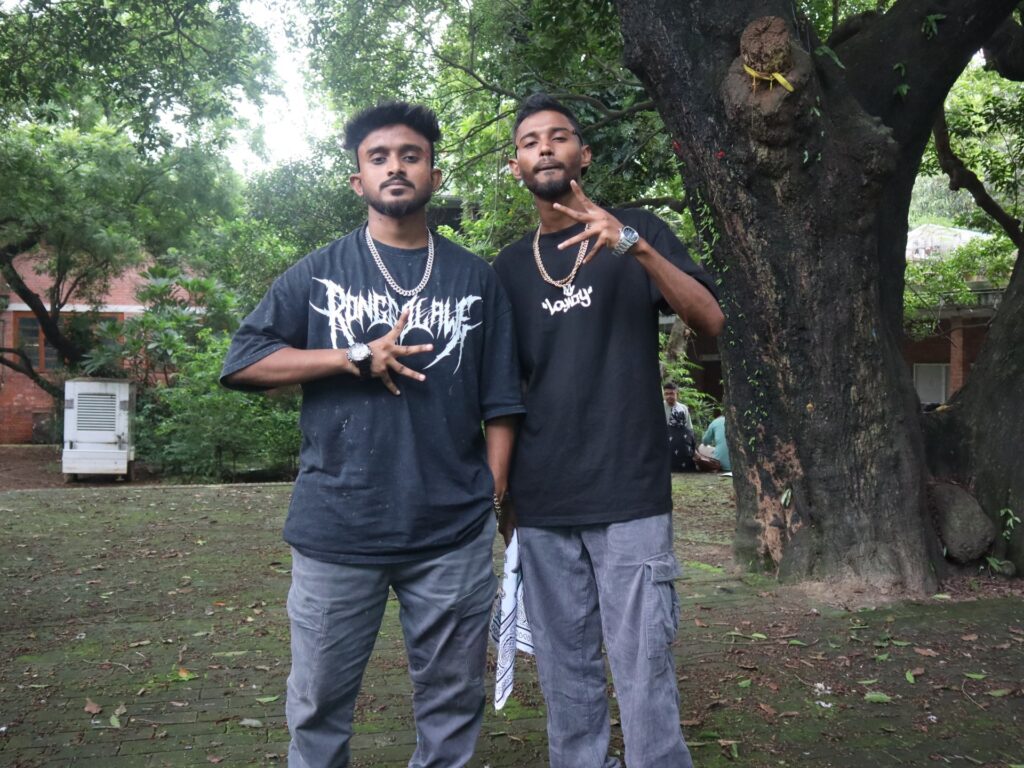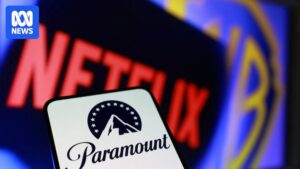
Young Bangladeshis are wielding the same cultural tools that helped them oust former Prime Minister Sheikh Hasina to hold the current rulers accountable. On July 16, 2024, as security forces cracked down on student protesters opposing Hasina’s authoritarian regime, rapper Massrur Jahan Alif, known as Shezan, released a powerful song titled Kotha Ko (Speak Up). The song questioned the freedom in the country, asking, “The country says it’s free, then where’s your roar?”
This pivotal moment coincided with the tragic death of Abu Sayed, a protester who became a symbol of the movement against Hasina, who had been in power for 15 years. Sayed’s death intensified public outrage, leading to widespread protests that eventually forced Hasina to flee to India in August. Shezan’s Kotha Ko, along with a track by another rapper, Hannan Hossain Shimul, became anthems of the uprising.
The Role of Rap and Memes in Political Change
Fast forward a year, Shezan has released another impactful track, Huddai Hutashe, critiquing the post-Hasina political landscape by highlighting how “thieves” are being celebrated. This reflects a broader trend where rap, social media memes, and graffiti have become mainstream tools for political expression in Bangladesh.
As mob violence surged following Hasina’s ouster, a viral Facebook meme captured the public’s discontent. It depicted the Bangladesh government’s emblem altered to read “Mob’s Republic of Bangladesh Government,” critiquing the government’s inaction against mob rule. Created by journalist and activist Imran Hossain, the meme was widely shared and used as a silent protest.
Memes as a Form of Resistance
During the student-led revolution, the interim government under Nobel laureate Muhammad Yunus initiated reforms in various sectors. However, they struggled to control mob violence, which saw attacks on minorities and public figures. Memes played a crucial role in capturing public sentiment during these times.
“After the July uprising, some groups in Bangladesh – many of whom had been oppressed under the previous regime – suddenly found themselves with a lot of power. But instead of using that newfound power responsibly, some began taking the law into their own hands,” said Imran Hossain.
Memes mocking Hasina’s emotional displays after the crackdown, such as “Natok Kom Koro Prio” (Do less drama, dear), became viral, highlighting the shift in public discourse. According to Punny Kabir, a social media activist and PhD student, ridiculing Hasina was once difficult due to her regime’s oppressive tactics.
Art as a Catalyst for Change
As fear of Hasina’s regime dissipated, public expression flourished. Walls were adorned with graffiti and slogans like “Killer Hasina” and “Stop Genocide.” Political analyst Altaf Parvez emphasized the importance of these artworks in inspiring courage among protesters.
“Slogans like ‘If you are scared, you’re finished; but if you resist, you are Bangladesh’ – one slogan can make all the difference, and that’s exactly what happened,” Parvez noted.
Memes continue to target various political entities, reflecting the dynamic political environment. Imran’s work, for instance, satirizes the sycophancy towards political figures, both past and present, illustrating the shifting allegiances in Bangladeshi politics.
The Future of Political Art in Bangladesh
Experts believe that the cultural tools that helped dismantle Hasina’s regime will remain influential. US-based Bangladeshi geopolitical columnist Shafquat Rabbee highlighted the role of memes as effective political commentary in Bangladesh, akin to platforms like X in the West.
The central bank’s decision to feature student graffiti on new banknotes underscores the art form’s significance in political communication. Rap has also cemented its place in Bangladeshi politics, with Shezan and Hannan’s tracks resonating widely during the protests.
“I wrote these lyrics myself,” Shezan said about Kotha Ko. “I didn’t think about how people would respond – we simply acted out of a sense of responsibility to what was happening.”
As Bangladesh continues to navigate its post-Hasina era, the cultural expressions that fueled the revolution are expected to play a significant role in shaping the nation’s political future. From advertising jingles to lifestyle influences, the impact of rap and memes is undeniable, with Shezan affirming, “The future of rap is bright.”






